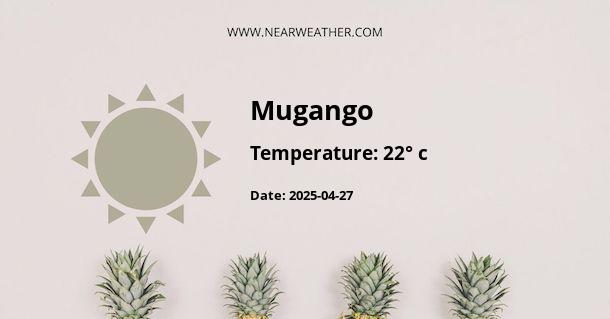Introduction
Mugango is a small, scenic town located in the Mara region of Tanzania. Known for its pleasant climate and stunning natural beauty, the area is a paradise for nature and climate aficionados. This article provides an in-depth analysis of the climate and weather of Mugango, using expert insights, scientific data, and local knowledge.
Geographical Context
Mugango is situated in the eastern part of the Mara region, which lies along the shores of Lake Victoria in northern Tanzania. The region is characterized by a mix of hilly terrain and flat plains, which significantly influence its climate.
Climate Classification
According to the Köppen climate classification, Mugango features a tropical savanna climate, signified by the code 'Aw'. This is characterized by a distinct wet and dry season, with the majority of the annual rainfall occurring during the wet season.
Annual Weather Overview
The weather in Mugango varies over the course of the year, with a distinct wet and dry season. The following sections provide a month-by-month breakdown.
January - March
These are the hottest months in Mugango, with average temperatures ranging from 25°C to 30°C. Rainfall is minimal, making it part of the dry season.
April - June
These months mark the onset of the wet season. April is usually the wettest month, with an average rainfall of around 200mm. Temperatures during this period range from 22°C to 28°C.
July - September
This period represents a cooler phase, with temperatures averaging between 20°C and 25°C. Rainfall is moderate, with September typically the driest month.
October - December
This period marks the return of the dry season. Temperatures start to rise again, averaging between 24°C and 29°C, while rainfall decreases.
Climate Factors
Mugango's climate is influenced by several factors, including its proximity to the equator, its altitude, and its geographical location near Lake Victoria.
Proximity to the Equator
Located close to the equator, Mugango experiences relatively consistent temperatures throughout the year. However, the town does have distinct wet and dry seasons, largely due to atmospheric pressure changes and wind patterns.
Altitude
Mugango's altitude also plays a significant role in its climate. The town is situated at a relatively high elevation, which contributes to its cooler temperatures, especially during the July-September period.
Proximity to Lake Victoria
Mugango's proximity to Lake Victoria also influences its climate. The lake moderates the local climate, helping to maintain relatively stable temperatures throughout the year.
Climate Adaptation
Residents of Mugango have adapted to the local climate in numerous ways. For instance, they have developed farming techniques that make the most of the wet season, and constructed buildings designed to keep cool during the hotter months.
Conclusion
In summary, Mugango, Tanzania, has a tropical savanna climate characterized by a distinct wet and dry season, relatively consistent temperatures, and influences from its geographical location and altitude. The local residents have effectively adapted to these conditions, demonstrating the resilience and ingenuity of the human spirit.
References
- Köppen, W. (1936). Das geographische System der Klimate. In W. Köppen & R. Geiger (Eds.), Handbuch der Klimatologie (Vol. 1, part C, pp. 1-44). Borntraeger.
- Tanzania Meteorological Authority. (2020). Annual Climate Report.
- World Bank. (2019). Climate Change Knowledge Portal.
A - Mugango's Latitude is -1.683330 & Longitude is 33.700001.
A - Weather in Mugango is 22° today.
A - Climate Conditions in Mugango shows broken clouds today.
A - Humidity in Mugango is 70% today.
A - Wind speed in Mugango is 6.52 km/h, flowing at 121° wind direction. today.
